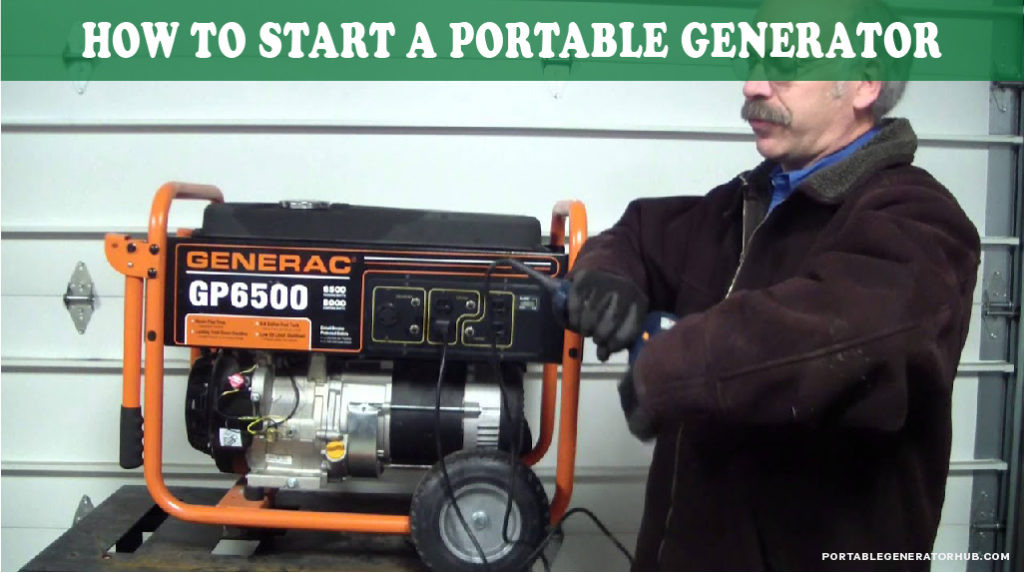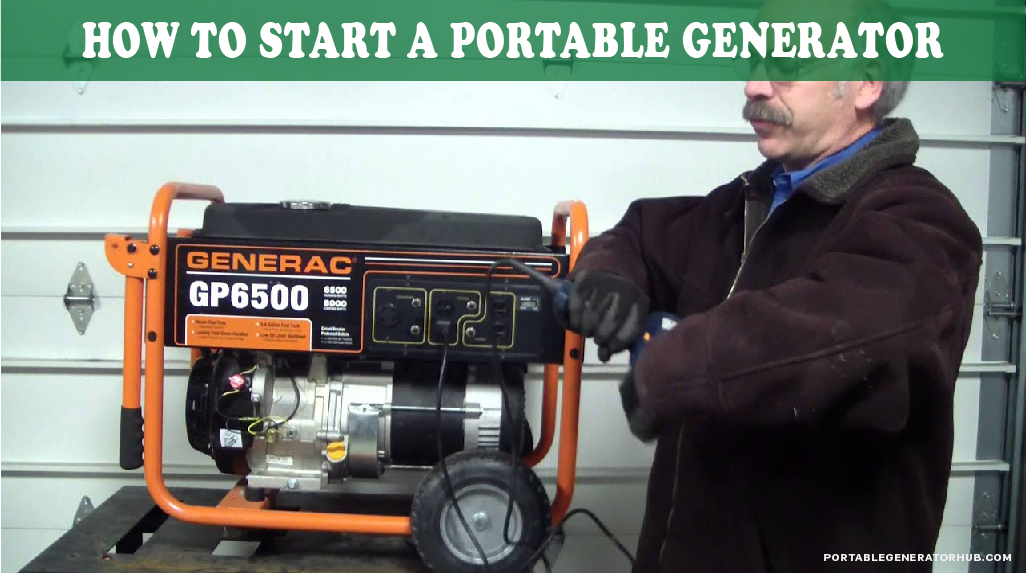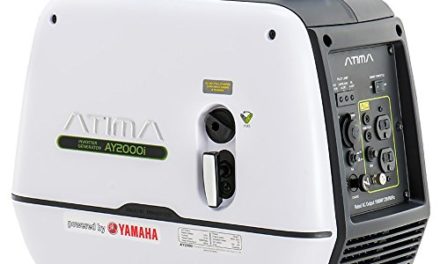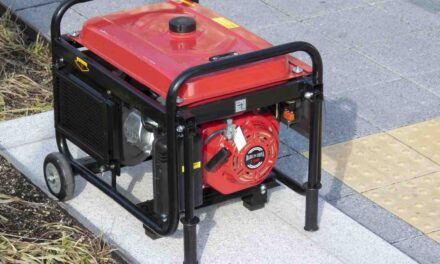
A portable generator is a multipurpose machine. It provides power for you when there’s no readily available electrical source nearby. Portable generator plays a great role for running your basic appliances at home. When there’s a power outage, and life at a campsite is more comfortable with a generator. Just you have to know how to start a portable generator safely, as it may not be as simple as you think.
It’s true that in most cases the best portable generators are extremely easy to use. They’re very simple, really. But still, you need to take certain steps so that you can start and use the generator safely. It’s not just a matter of flicking a switch each time.
How Do You Start a Generator with a Key?
To start a generator with a key, follow the steps below.
Step 1 – Check the engine oil gauge.
Step 2 – Press the power button to turn your generator on.
Step 3 – Open the fuel valve to allow fuel to flow into the engine.
Step 4 – Turn the choke on. Different generators have different types of chokes. For some, you’ll pull out the choke to turn it on and push it back in to turn it off. For others, you’ll slide the choke to the extreme left to turn it on and slide it to the right to turn it off.
Step 5 – Insert the key and turn it to the right to start it. If everything’s fine with your generator, it should start immediately or at the second or third attempt.
How To Start a Generator without a Key?
The good news is that most portable generators that offer key-start also offer recoil start as a backup. So, if the key is not available or the key-start option isn’t working, you can shift to the recoil start option.
Step 1 – Check the engine oil gauge.
Step 2 – Press the power button to turn your generator on.
Step 3 – Open the fuel valve to allow fuel to flow into the engine.
Step 4 – Switch the choke on.
Step 5 – Grab the recoil handle and pull it swiftly at once. The generator should start immediately or after several attempts.
At this juncture, we’d like to remind you of the fact that starting your generator with the key is the best, smartest, and easiest option. Aged people and pregnant women may not be able to use the recoil start. So, if the key-start option isn’t working, try to fix it as soon as possible.
How To Start a Generator with a Drill?
Many portable generators do not have the key-start option. You can only start them through a recoil start. Unfortunately, it is possible for the starting cord to cut off while you’re trying to start it. If that happens, there’s a workaround.
You can start your generator with a drill. How? We’ll tell you now.
Step 1 – Remove the housing of the recoil assembly.
Step 2 – Since the handle of the cord is cut off, remove the entire cord. It is useless without its handle.
Step 3 – Locate the nut at the side of the naked recoil assembly.
Step 4 – Get an Allen key that fits the nut.
Step 5 – Fit the key to the mouth of your drill.
Step 6 – Place the key on the nut at the side of the recoil assembly and start your drill. The catch here is to spin the recoil assembly with the drill. Immediately you start your drill, it will spin the recoil start. This should start your generator. The major drawback of this option is that you may have to try it several times before it works.
How to Start a Generator with a Choke?
First off, you need to understand the function of a choke to a generator. The choke reduces the amount of air that goes into the engine of your generator. It can only perform its function when you switch it on. So, when the engine is cool, it may be difficult to start because a lot of air is flowing into the engine.
You need to switch the choke on before starting your generator. When the generator starts working, switch off the choke. Once the engine is hot, it no longer needs the help of a choke. If you turn off your generator to refill its tank, you may not need to switch on the choke because the engine will still be hot. As such, the engine will start immediately.
How Long Does It Take for a Generator to Turn On?
This depends on the condition of your generator. There are basically two ways to start a generator. It is either you turn it on through the key ignition, like you start a car, or through a recoil start. For a recoil start, you’ll pull its starting cord. If your generator is in good condition, the generator will start in a few seconds, usually at the first attempt.
However, if the generator isn’t in good condition, it may start after several attempts or it may not start at all. So, what makes a generator difficult to start? Here are some of the reasons why your generator may not start quickly.
- Its spark plug is either dead or dirty. Clean the plug and try it again. If the generator does not start at all, the spark plug may be dead. Replace it.
- For a generator that uses a key starter, it may not start easily if the starter battery is weak. Thankfully, such generators usually have an option of recoil starting. So, if the key does not start, you can try the pull start.
- The generator has not been serviced in a long time.
- The engine oil of the generator is dirty and requires replacement.
So, if you can avoid all the situations listed above, your generator will always start in less than 5 seconds. It will always start at the very first attempt, whether you’re using a recoil starter or a key starter.
What Causes the Generator Not to Start?
There are several reasons why your generator would not start. Here are some of them.
- Weak battery: If the starter battery of your generator is weak, the key-start will not work. You have to start your generator with the recoil-start option or find a way to charge the battery.
- Dead spark plug: If the spark plug of your generator is dead or dirty, your generator will not start. Remove the plug and clean it with gasoline. Allow it to dry off. Insert it and try again. If the generator does not start, change the plug totally.
- Cold spark plug: If the weather is very cold, your generator may not start because its plug is cold. Remove the plug and warm it by placing it near a naked fire for 2 minutes. Insert it inside the generator and try again. It should start.
- Dirty engine oil: If the engine oil of your generator is dirty, it may not start until you service the generator and change the oil.
5 Easy Steps to Start a Portable Generator:
1. Put It in the Right Location
It should be far enough away that its noise doesn’t bother you at all. Keep in mind that a generator’s rated decibel level is often measured at 23 feet away. Place it nearer to you, and it will sound much noisier.
If you’re using a gasoline home generator, you also should think about proper ventilation for the fumes. The exhaust pipe must be leading away from your house or camp. The exhaust must be kept away from doors and windows. You really don’t want to risk carbon monoxide poisoning.
2. Fill Up the Tank
It’s always best if you fill up your tank right at the start. That’s so you can have a better idea of the run time before you need to refuel again. So check your tank and fill it up.
Don’t fill it to the brim. Instead, you should have about 1.5 inches of space from the top of the fuel line. This space prevents the accumulation of too much pressure inside, and it also can prevent accidental spills.
Just make sure that you’re using the manufacturer’s recommended type of gasoline. Some may specify the use of unleaded gasoline or 87-octane gasoline. And don’t pour in gasoline if it uses diesel.
3. Check the Oil
Take the oil cap off and lift the dipstick. Wipe away the old oil. Now put the cap back all the way on and then lift it up again.
You can then check the oil level. It must be filled with enough oil that even if you didn’t have a dipstick you can still touch the oil with your finger.
4. Starting the Engine
Now turn the fuel valve to the ON position. This is usually the vertical position. Pull the choke to the ON position all the way out.
It’s time now to start it. With a recoil start, you pull on the cord to start the engine. But many modern name generators now come with an electric start option by adding electric start to a generator.
This allows you to just push a button or flick a switch or dial to start the generator. Moreover, if you don’t want any trouble regarding how to start a movable generator, this is the more convenient option.
Once the engine runs, push the choke back in. You can now plug in your generator cords or appliances and you can power the appliances you need.
Final Words
As a rule of thumb, you need to service your generator as and when due. Check the user manual that comes with the generator. You’ll find the manufacturer’s recommendations and instructions in the manual. Follow all the instructions to the letter, especially how often you need to service it.






